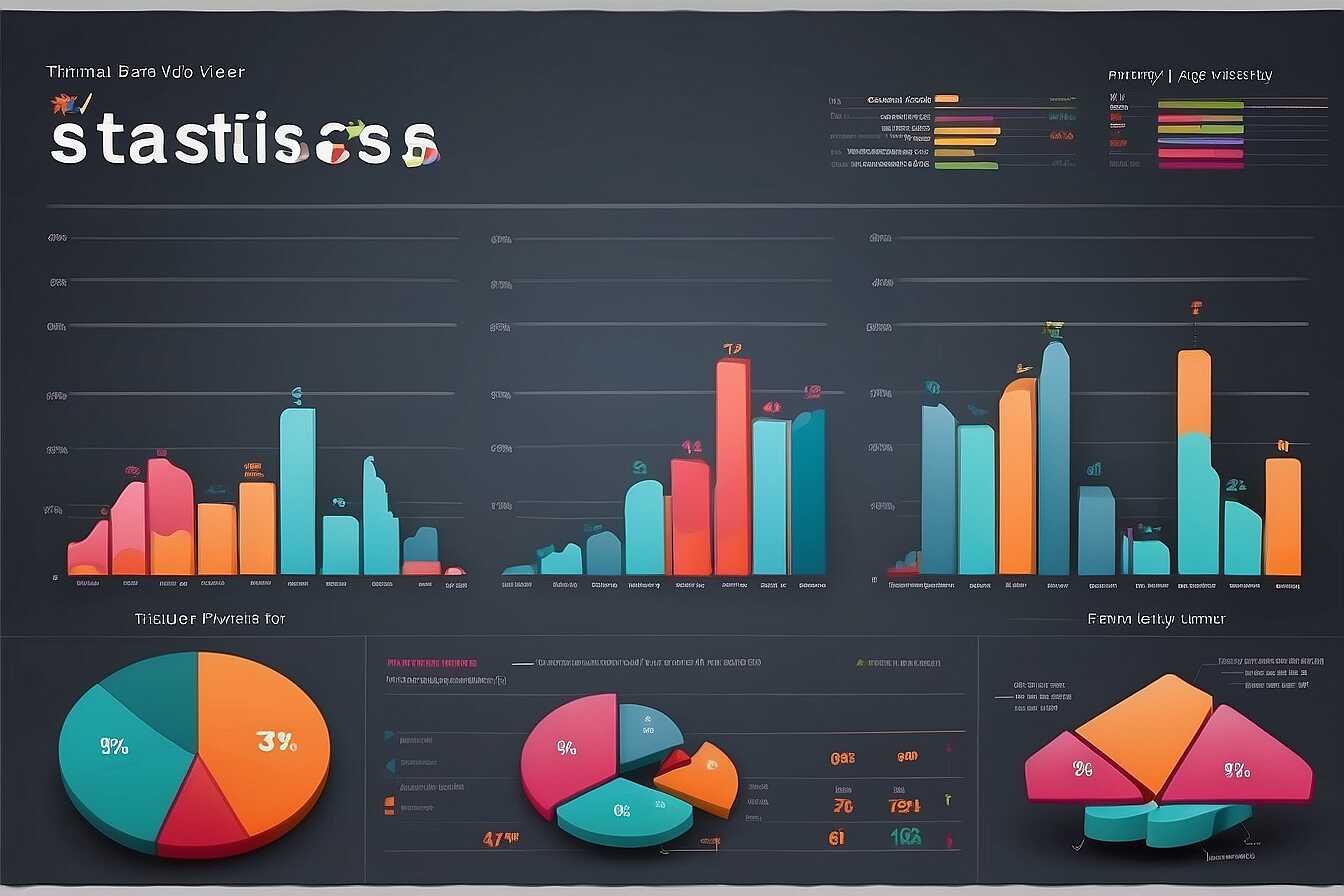Optimizing URL structures for global SEO targeting by country and language is essential for reaching diverse audiences effectively. A well-structured URL system helps improve search visibility and user experience, which are crucial in international markets. At Metrics Rule, we emphasize creating effective URL strategies that not only cater to different regions but also adapt to the specific languages of your target users. By mastering these techniques, SEO professionals and digital marketers can enhance their international outreach and drive better results.
Why URL Structure Matters for International SEO Success
URL structures play a vital role in international SEO success. They are essential for tailoring your website to different markets. An optimized URL structure can enhance search visibility significantly. For instance, using localized URLs effectively signals to search engines the target language and region. This localization ensures users experience more relevant content. Additionally, employing an optimized URL structure improves user experience, leading to better engagement and conversion rates. Numerous studies show that around 70% of users prefer localized URLs, finding them relatable and trustworthy during their searches. Providing URLs that reflect regional languages and formats helps in ensuring that your pages rank well in local search results.
Strategies for Creating Localized URLs
When creating localized URLs, you can implement several effective strategies to optimize user experience. First, use country codes or language tags to clarify the target audience. For example, “example.com/fr/” signifies a French language page. This URL structuring is designed to enhance both crawling and indexing. Next, maintain consistency in your approach across your site; inconsistencies can confuse users and search engines alike. Lastly, leverage SEO tools and analytics for testing. A well-structured URL strategy in international SEO not only increases visibility but also reinforces your brand’s reliability and authority globally, helping you stand out in competitive e-commerce landscapes.
Essential Strategies for Designing International URLs
When creating international URLs, key considerations include keyword inclusion, structure, and user-friendliness. Optimize your URLs by incorporating local keywords and phrases that resonate with target audiences. Also, make sure the URL structure is easy to read and remember. It’s essential to consider a variety of country and language combinations to enhance SEO and ensure relevant content is easily accessible for international visitors.
Best Practices for Keyword Inclusion in International URLs
Incorporating the right keywords in international URLs is crucial for improving search engine optimization. Focus on using relevant local keywords to boost your visibility in specific regions. Each URL should convey the content’s subject while reflecting the language and cultural nuances of the target audience. This approach ensures better crawling and indexing by search engines like Google and Bing, enhancing your site’s potential to rank higher in local search results.

Choosing Between Subdomains and Subdirectories for Global Strategies
When deciding between subdomains and subdirectories for global SEO, both options have unique advantages. Subdomains can offer more flexibility, allowing separate management of content for different countries or languages. This structure can enhance the reliability of localized content and improve SEO by enabling targeted keyword strategies. In contrast, subdirectories maintain a strong link authority due to their connection to the main domain, which can benefit overall search engine performance. Testing both options is essential to ensure alignment with your target audience’s behavior and preferences.
Evaluating SEO Performance of Subdomains and Subdirectories
Evaluating SEO performance involves crucial comparisons between subdomains and subdirectories. Specifically, subdomains can enrich localized marketing efforts by enabling tailored content and improved crawling for language-specific queries. Conversely, subdirectories often result in better overall domain authority, since they leverage the strength of the primary domain too. Studies show that a majority of marketers (approximately 70% in recent surveys) find subdirectories offer a more effective long-term strategy for international targeting. Therefore, testing both approaches can provide proven data on which method enhances performance based on your specific audience needs.
Key Statistics on Global URL Configurations
- Approximately 75% of websites use subdirectories for country-targeted pages.
- 58% of users prefer websites that use their local languages in URLs.
- Using a country code top-level domain (ccTLD) can boost local rankings by up to 25%.
- Over 90% of SEO experts recommend clear and descriptive URLs for international pages.
- Pages with geographic keywords in URLs often see a 20% hit increase.
- Research shows that URLs with fewer parameters rank better in local searches.
- Sites with localized URL structures can improve click-through rates by 30%.

Leveraging hreflang Tags for Language and Regional Optimization
Hreflang tags are essential for guiding search engines on the appropriate language and regional content to display. By using them, businesses can ensure that their users receive the correct version of their website based on their location. For example, a website targeting English speakers in both the United States and the United Kingdom would use hreflang tags to distinguish between the two. To implement hreflang tags effectively, you need to include the relevant language codes and regional codes. A common method is to include tags in the HTML header or via XML sitemaps. It’s crucial to maintain accuracy to avoid confusion for search engines, which enhances indexing and crawling of the correct content.
Best Practices for Implementing Hreflang Tags
To maximize the efficacy of hreflang tags, follow certain best practices. Each hreflang tag must specify the language and country code—using ISO 639-1 language codes and ISO 3166-1 country codes. It’s also important to test the implementation to ensure it works seamlessly across different search engines like Google and Bing. Many companies also include a “self-referencing” hreflang tag in every version of their content, improving reliability. Ensure you are aware that a single page can hold up to 50 hreflang tags. SEO professionals and website developers, such as those at Metrics Rule, can enhance their international SEO strategies by utilizing these guidelines to ensure that users receive the correct regional content.

Utilizing Google Search Console for Effective Geo-Targeting
Google Search Console (GSC) offers essential features for enhancing geo-targeting. One of the key features is the ability to set geographic targeting under the “Settings” tab. You can choose a target country to help Google understand which location you are focusing on. Additionally, the “Performance” report in GSC provides valuable insights into search visibility across various regions. These features, combined with the ability to analyze crawl data and page indexing, ensure that your website meets the requirements of a global audience. Using GSC effectively improves your site’s performance and optimizes your international SEO strategy.
Optimizing Country Targets and Language Preferences
To optimize your website for various countries, adjust the “country target” setting in Google Search Console. This allows you to specify which country you want your content to rank for. When implementing international SEO, it’s also important to include hreflang tags in your website’s HTML. These tags inform Google about the language and regional targeting of your content. This ensures that users see the most relevant version of your pages based on their location and language preferences. Additionally, frequent monitoring of performance data will reveal what’s working and what areas need improvement. These strategies combined can greatly enhance your website’s visibility and effectiveness in international markets.
Advantages of Tailoring Web Addresses for Markets
- Localized URLs enhance usability and boost user trust.
- Effective URL structures improve organic search rankings globally.
- Using country-specific URLs helps drive relevant traffic to your site.
- Optimizing web addresses supports better performance in international search engines.
- Custom URLs allow better tracking of user behavior across regions.
- Tailored structures facilitate targeted marketing strategies for diverse audiences.
- Internationally optimized URLs lead to higher conversion rates and sales.

Creating Mobile-Friendly URL Structures for Global Audiences
To create mobile-friendly URL structures, focus on simplicity and clarity. Key factors include keeping URLs short, using descriptive keywords, and avoiding unneeded parameters. This helps improve the mobile user experience and enhances the overall performance of your global SEO strategy. Businesses across different countries must ensure their URL structures are responsive, ensuring fast loading times and compatibility with various devices. It’s essential to cater to local audiences by avoiding complex URLs that may lead to issues during the mobile crawling and indexing processes. In 2023, approximately 60% of global web traffic comes from mobile devices, emphasizing the need for mobile optimization best practices.
Best Practices for Mobile URL Optimization
Implementing best practices for mobile URL optimization includes using HTTPS for secure browsing and employing responsive design principles. A mobile-friendly URL should ideally be concise, containing target keywords relevant to mobile searches. Utilizing subfolders rather than subdomains can provide a more efficient and user-friendly experience. Furthermore, including localized keywords tailored for specific regions enhances relevance for international audiences. Tools like Google Analytics help track mobile performance, allowing businesses to refine their strategies based on reliable user data. By focusing on these practices, companies can significantly improve their mobile user experience and secure higher rankings in mobile search results, ultimately driving more traffic to their e-commerce platforms.
Localizing SEO Efforts in URL Design and Structure
Incorporating local elements into your URL structures is crucial for maximizing SEO effectiveness. You can enhance search engine visibility by including keywords that reflect the geographic focus of your audience. For instance, if you are targeting Vancouver, use URLs that include “vancouver” and relevant product or service keywords, like “vancouver-shoe-store.” Use location-based keywords specific to countries or regions, such as “Australia,” “Germany,” or “Canada” for international targeting. Studies show that optimizing URL structures can lead to an organic traffic increase of up to 20-30%.
Practical Tips for Choosing Location-Based Keywords
Selecting location-based keywords requires thorough research and analysis. Ensure the keywords align with local terminology and user intent to maximize effectiveness. Use tools like Google Keyword Planner and AI keyword generation software to uncover high-volume, relevant phrases. Focus on keywords that exhibit high search volume while remaining specific to your area; for example, “Vancouver digital marketing” or “E-commerce services in Toronto.” Tailoring your URL structure to feature these selected keywords enhances relevance and increases the likelihood of higher rankings in local searches.
Notable Platforms and Their Global URL Strategies
- Shopify excels in user-friendly URLs for e-commerce but may lack certain localization features.
- WordPress offers customization for various regions, though setup can be complex.
- BigCommerce remains strong in optimizing URLs but offers limited flexibility in URL structures.
- Magento provides extensive international features, but regular updates can complicate URL management.
- Squarespace simplifies URL configuration but may not cater to deeper SEO needs.
- Wix is easy for beginners but may not have the best advanced SEO options.
- OpenCart allows customized URL paths but requires technical knowledge to implement effectively.
Analyzing URL Performance with Analytics for International Reach
To effectively track and analyze the performance of your URLs targeted for different countries, utilize analytics tools like Google Analytics and similar platforms. These tools provide valuable insights into user engagement, geographical data, and traffic sources. Focus on essential metrics such as organic traffic, bounce rate, and conversion rates to assess the reliability of your international SEO efforts. By comparing the performance of URLs across different regions, you can identify which strategies enhance visibility and drive the best results.
Essential Metrics for International URL Performance Analysis
When analyzing international URL performance, several key metrics are crucial. Organic traffic is a primary indicator of effectiveness, revealing visitor engagement across various language-specific URLs. Bounce rate indicates how well your content meets user expectations. Meanwhile, conversion rates help evaluate the efficiency of your SEO strategies. A proven approach is to regularly review these metrics to identify trends and test which URLs perform best in global SEO. Utilizing tools that enable comparison across different countries will enhance your ability to optimize your international presence effectively.
